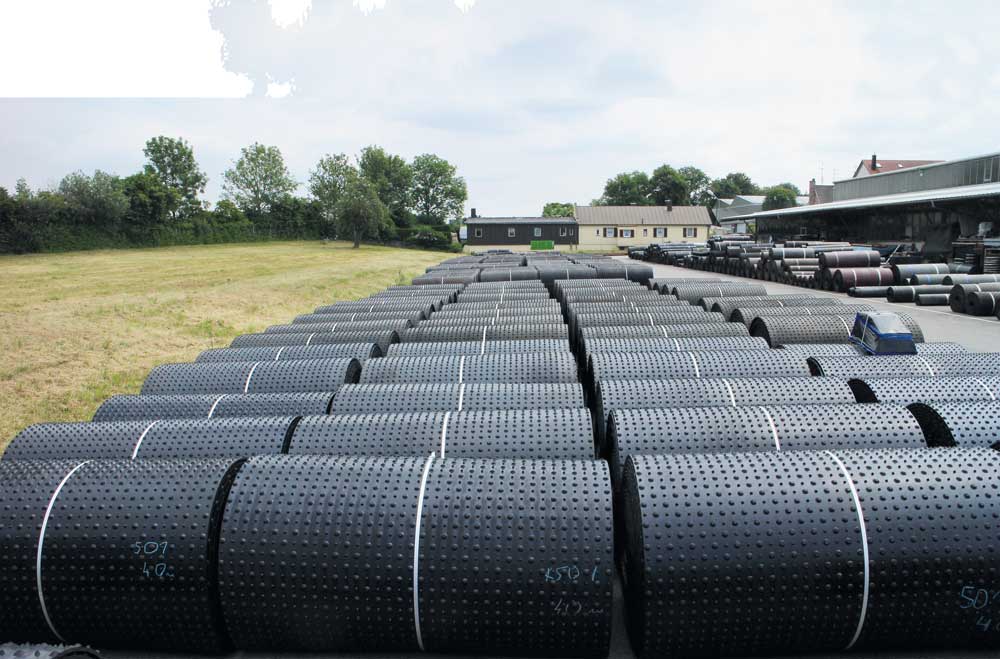DLG Testing Framework for Elastic Floor Coverings: This is standard
Dr Harald Reubold DLG Test Center for Technology and Farm Inputs
As (DIN) standards result at the suggestion and through the initiative of interested groups, and an agreement among all participants is produced in the standardisation process, they have a generally binding character. They are based on the verified results of science, technology and experience, and therefore represent the latest technology at the moment they are conceived. An application requirement for standards occurs when the legislator specifies their mandatory application in laws or regulations or in other invitations to tender, e.g. for company orders which define descriptions of objects set down in writing in the standards as target values.
DLG Test Programme becomes DIN Standard
In the past several months, the responsible standards committee at the German Institute for Standardisation (Deutsches Institut für Normung) under the direction of Dr. Harald Reubold from the DLG Test Center as chairman and under active participation of the leading German floor covering manufacturers, e.g. Kraiburg and Huber, put the finishing touches on and recently adopted the new DIN standard 3763 (Elastic floorings for cattle and dairy cows walking and rest surfaces - Requirements and testing).
The standard draws on the test programmes of the DLG as they were recorded by the DLG Test Commissions in the DLG testing framework for "elastic floor coverings for cattle and dairy cows". The DIN test programme mainly comprises the technical criteria for the mechanical resilience, i.e. abrasion resistance, permanent tread resistance and resistance to the use of high-pressure cleaners, as well as the resistance to or the occurrence of premature ageing on contact with frequently occurring acids and chemical compounds in barns. In addition, slip resistance and the determination of deformability and elasticity were adopted as animal-related criteria. All requirements apply to mats, web materials and composite systems.
Differing Requirements According to Service Classes
Farmers call for a corresponding durability against physical and chemical influences of the barn environment. This can be verified by the technical tests specified above. With regard to the animals, the requirements are mainly influenced by walking and standing on the one hand and by lying on the other hand – with the respective transitions. For living out typical behaviour patterns, standing and walking safety must be ensured during walking and standing. This is especially important in the case of extreme behaviour such as jumping and running or udder care in a three-legged stand. Floor loads between 200 kg and 800 kg per hoof contact area for fully-grown Fleckvieh cows (Holstein Frisian somewhat less) can be reproduced, which is why a deformable walking surface reduces the hoof load and promotes hoof health. When lying down and standing up, the floor must offer support, the lying area must be deformable and must adapt to the animal, altogether providing protection for the animals' joints. The DIN standard specifies the same requirements for all applications. An exception is the criterion "deformability and elasticity", for which the service classes affect the standard values to be achieved. Here the walking area, lying area and single-surface bay differ, whereby the lying area is in turn divided into four and the single-surface bay into two classes. These service classes therefore enable a clear assignment of use of the products, especially in view of clearly defined funding objectives.
Conclusion and Outlook
Beyond a DLG recognition, the DIN standard 3763 provide companies with a clear framework for the properties a floor covering must offer for the walking and lying area of cattle and dairy cows in Germany. The standardisation makes it even easier for farmers to recognise rule-compliant products with defined properties. However, with the division of floor coverings into classes according to comfort and animal welfare criteria which have also been made, public authorities like the Offices and Chambers of Agriculture, the German State Ministries and the Federal Ministry of Agriculture have a guideline at hand that defines the very fuzzy term of "comfort mat" used in some funding programmes more clearly and unambiguously. It would be desirable and useful to provide a verification "Tested according to DIN 3763" with specification of this class in funding programmes, as then investments can be steered more clearly in the direction of the respective funding programme. The standard can be obtained for a feed at https://dx.doi.org/10.31030/3131476.
Shortly after publication of the first version of the standard, the standards committee will consult at its next meetings on whether the test on the freedom from migration-capable polycyclic aromatic hydrocarbons is also to be included in a separate standard. This would then be referred to in the DIN 3763. Here as well, in cooperation with Kraiburg and the Fraunhofer-Institut für Verfahrenstechnik und Verpackung (Fraunhofer IVV - Research Institute for Process Engineering and Packaging) in Freising, Germany has already developed a method for being able to detect and evaluate a broad range of these potentially or actually carcinogenic plasticisers from floor coverings in the skin of farm animals. In addition, an international ISO standard is currently being developed under the direction of the International Organisation for Standardisation (ISO). The standards committee responsible there is already in close contact with its Germany counterpart so that in future major content from the German standard regarding the requirements and testing of floor coverings for cattle and dairy cows will probably also be valid worldwide.





